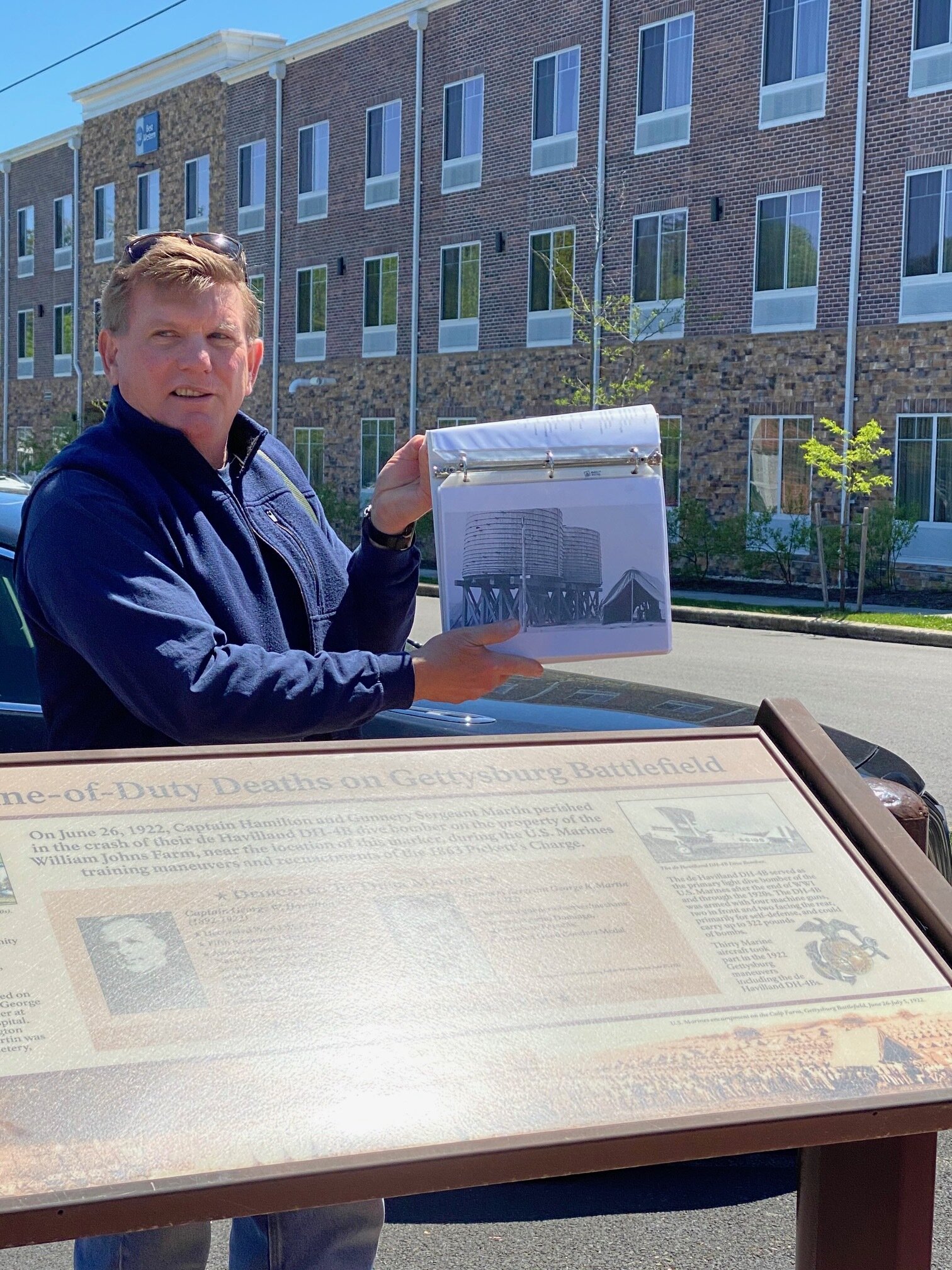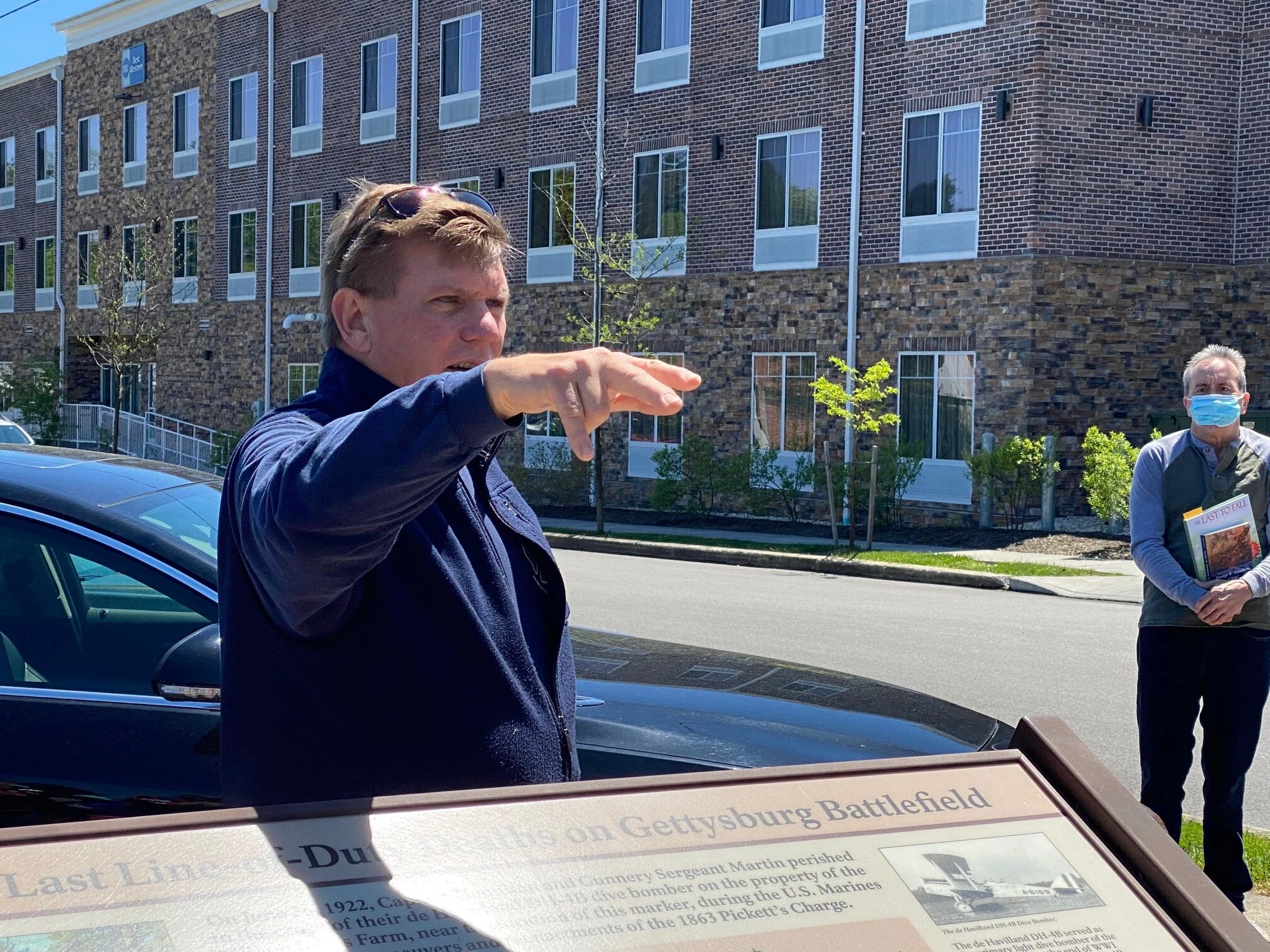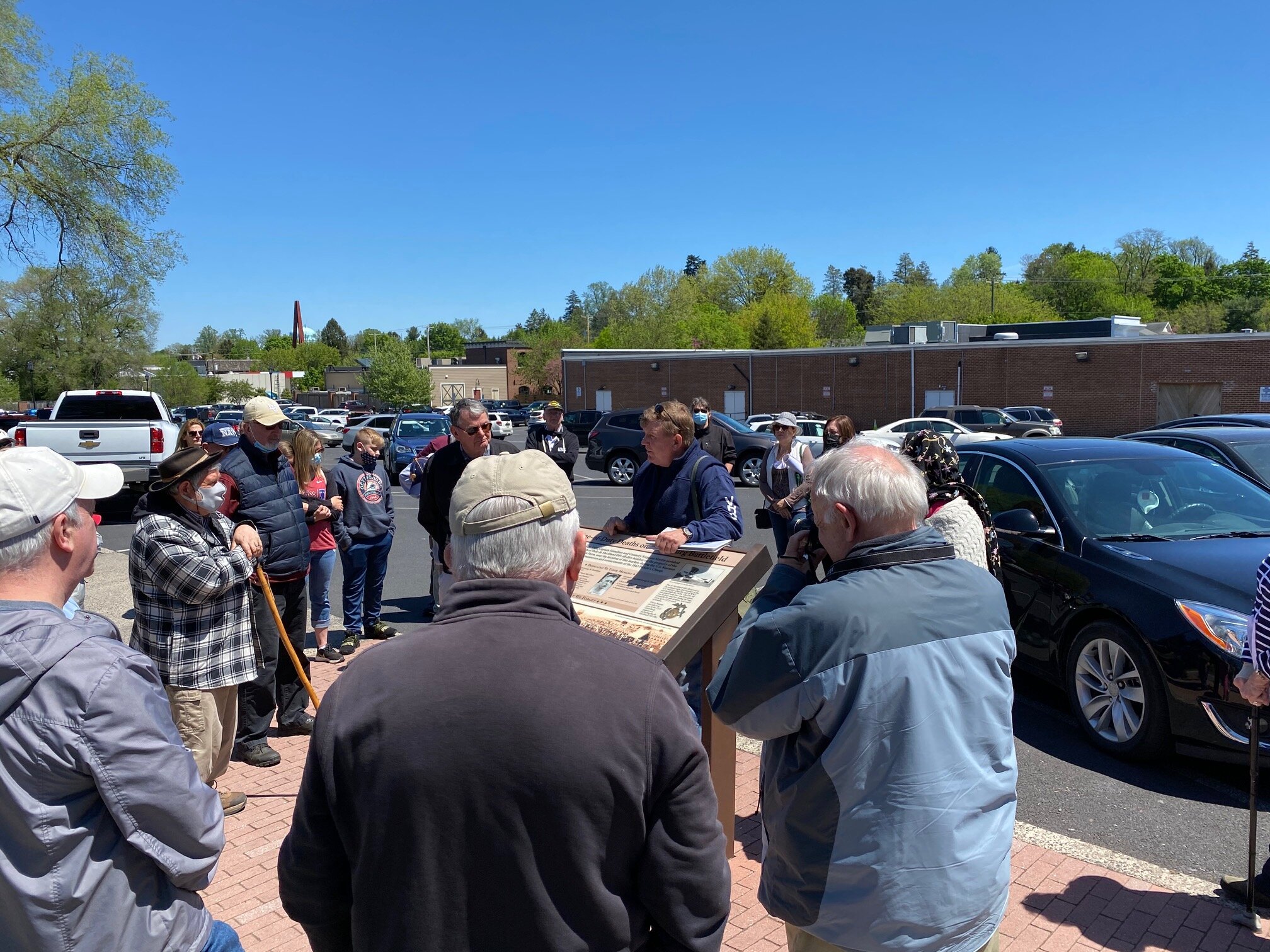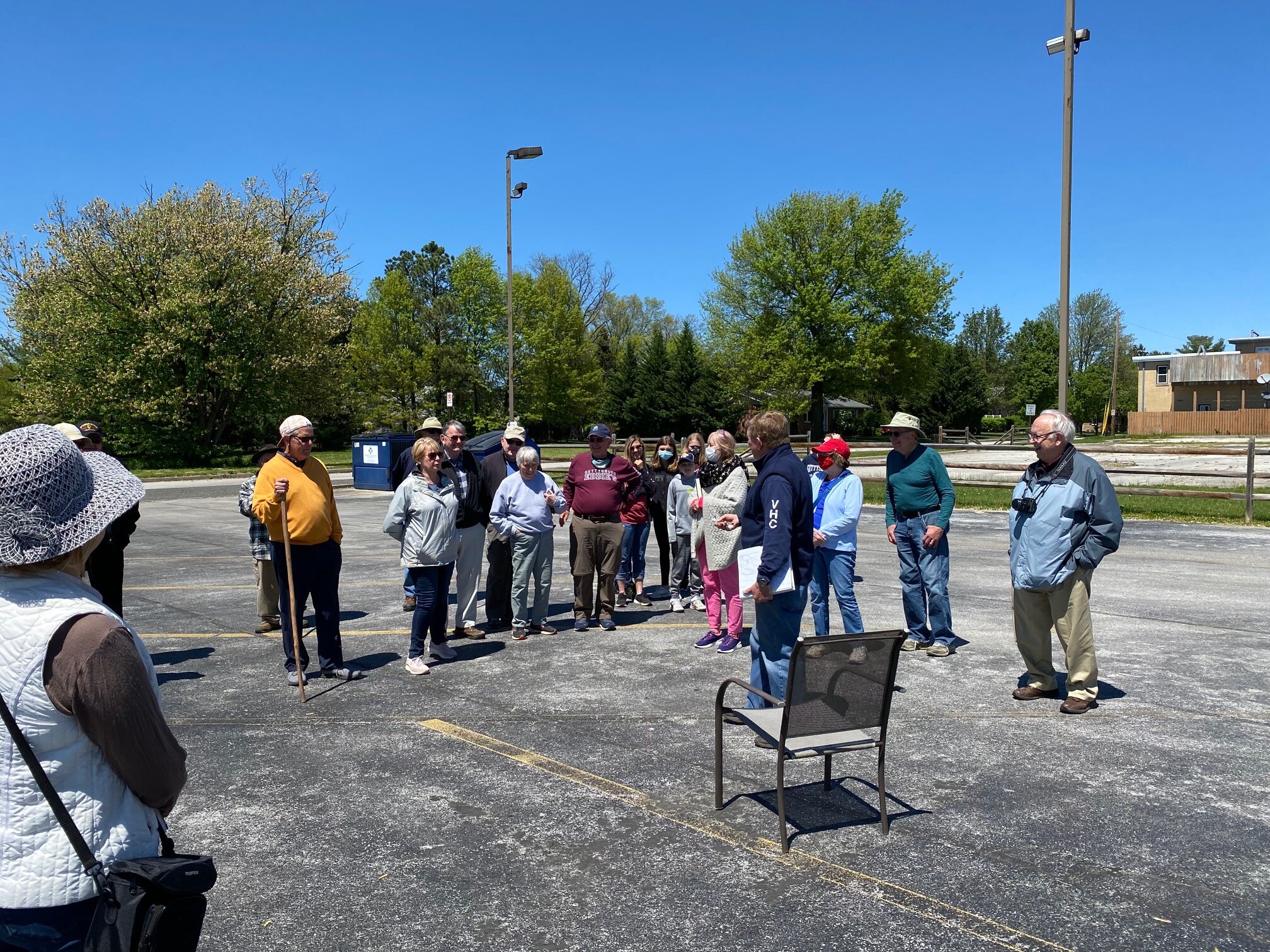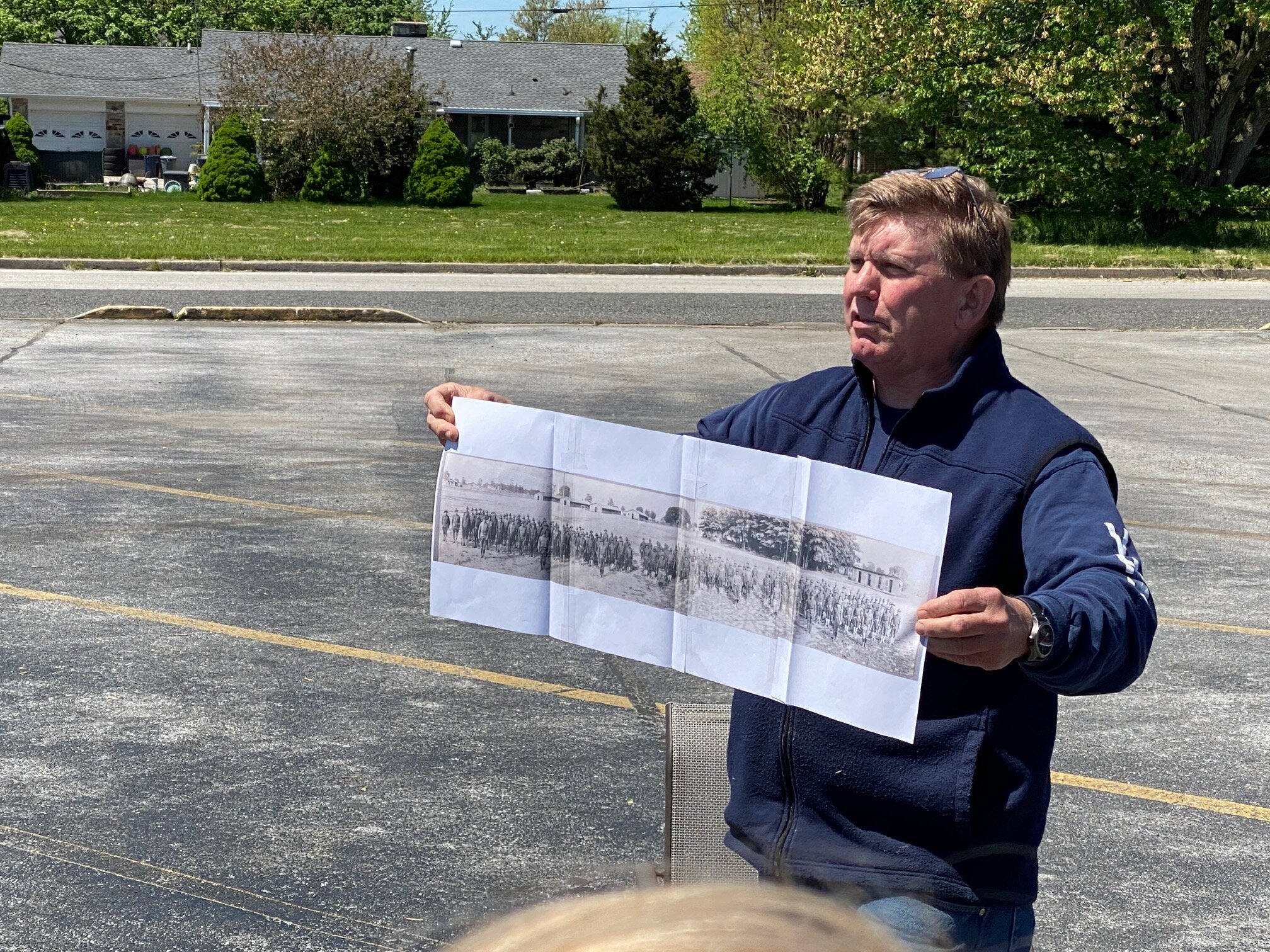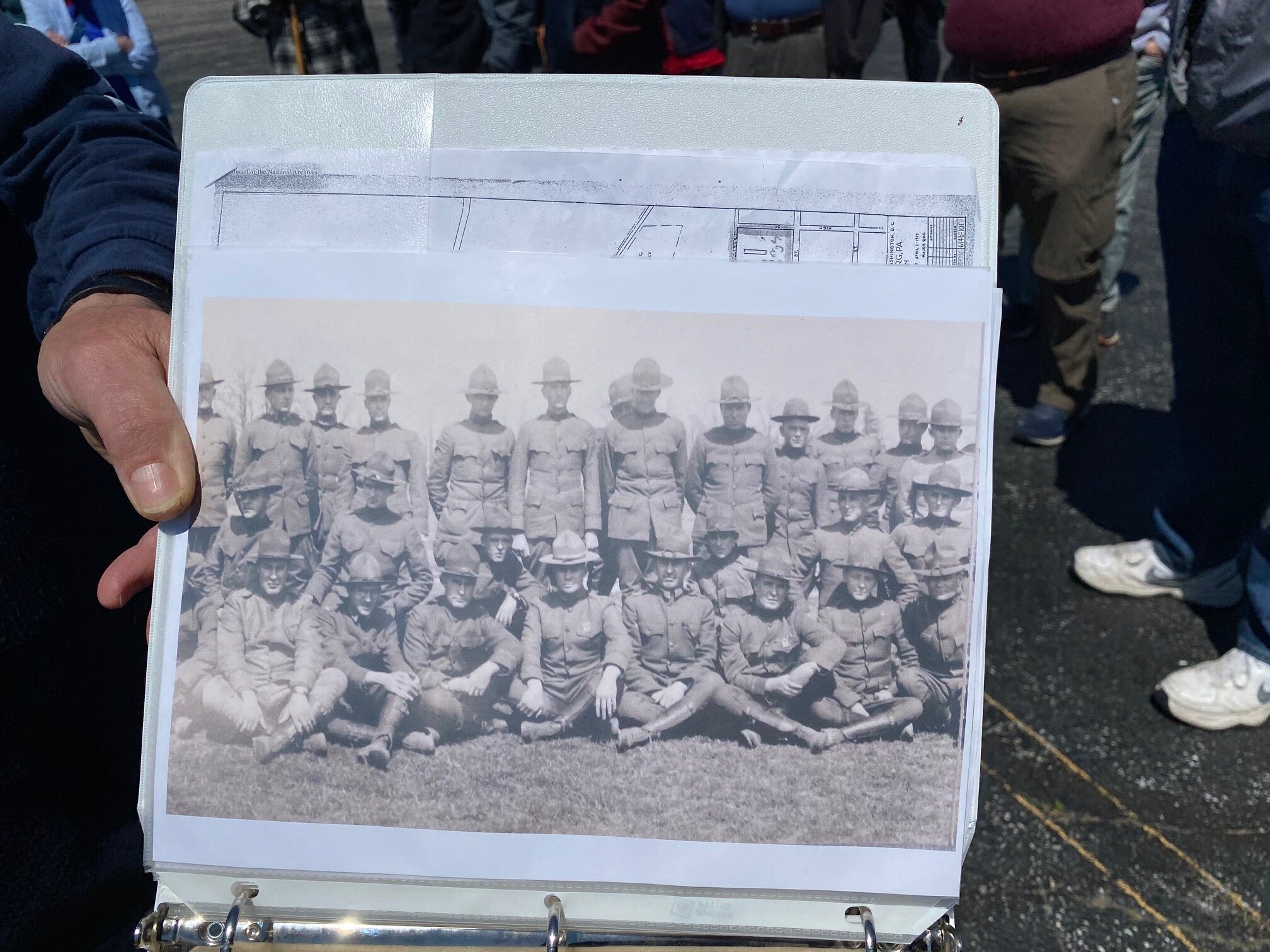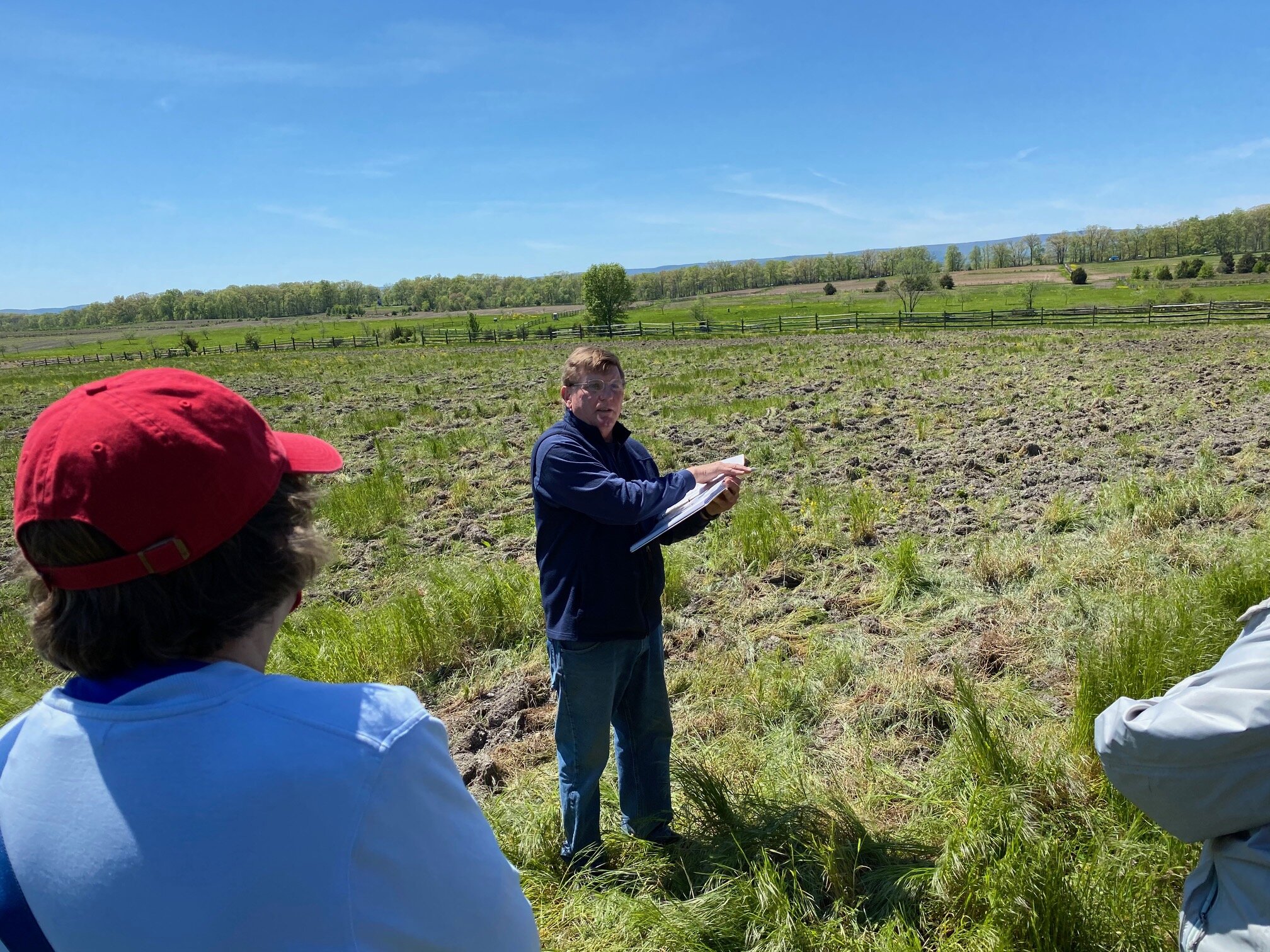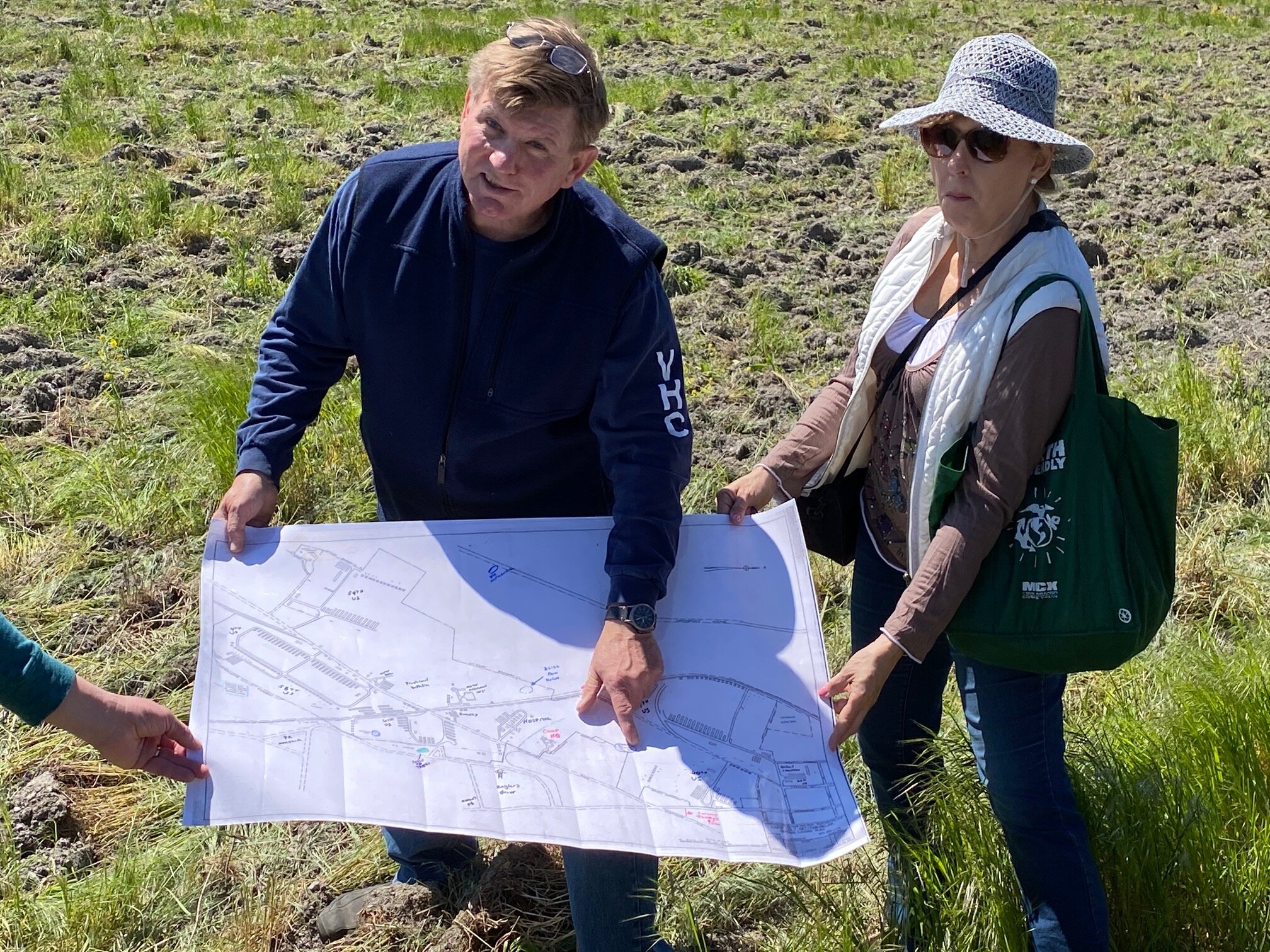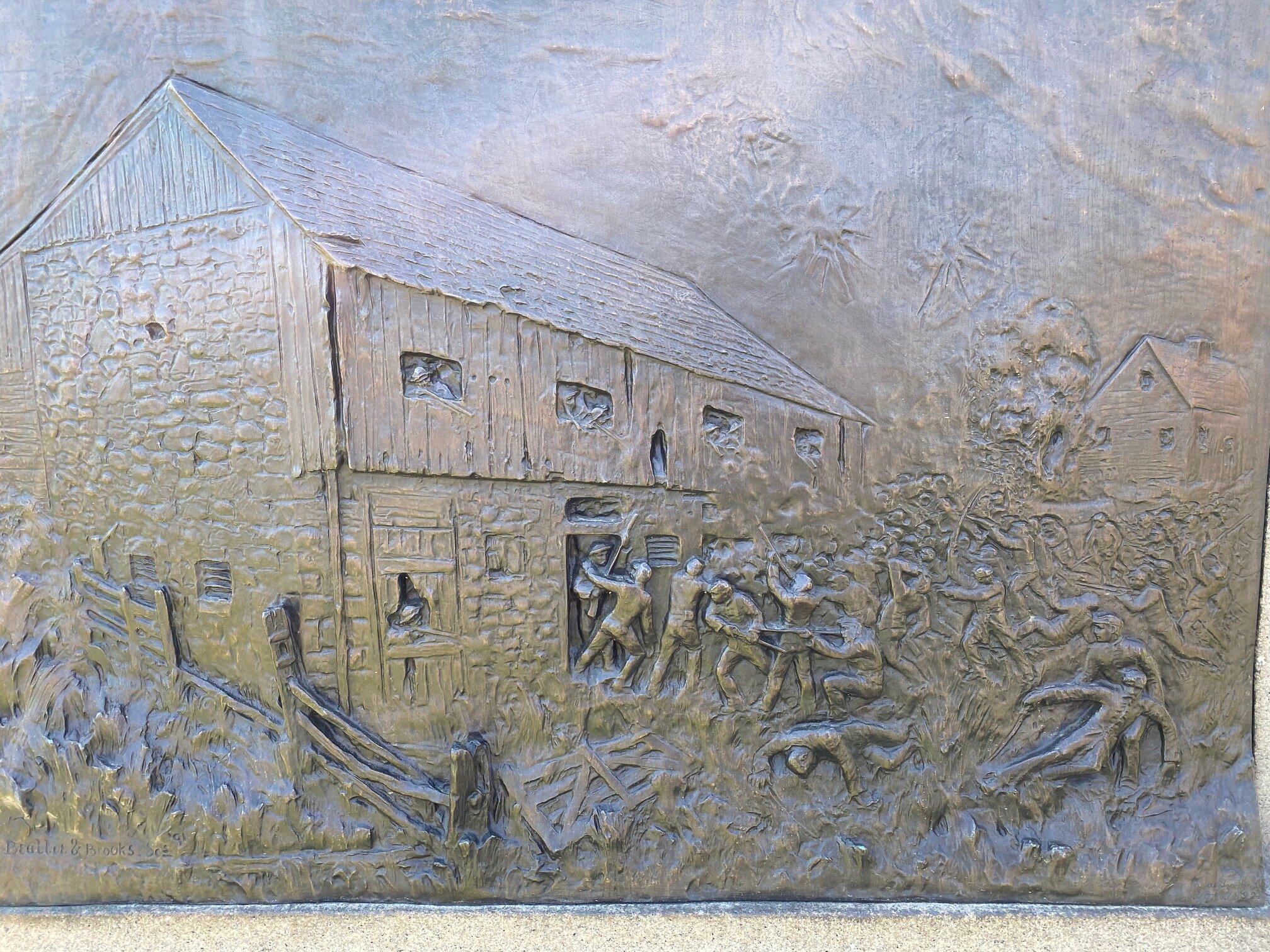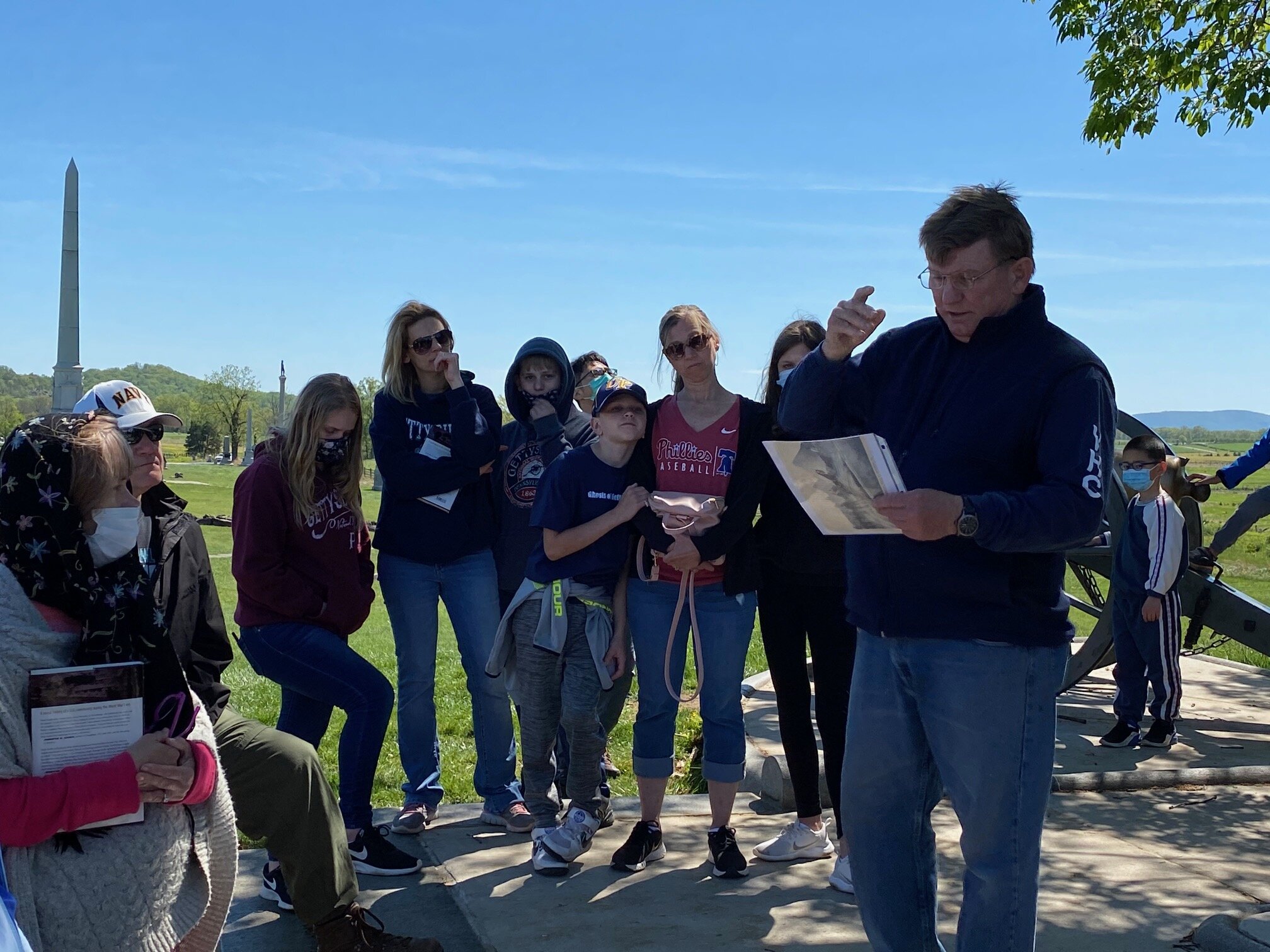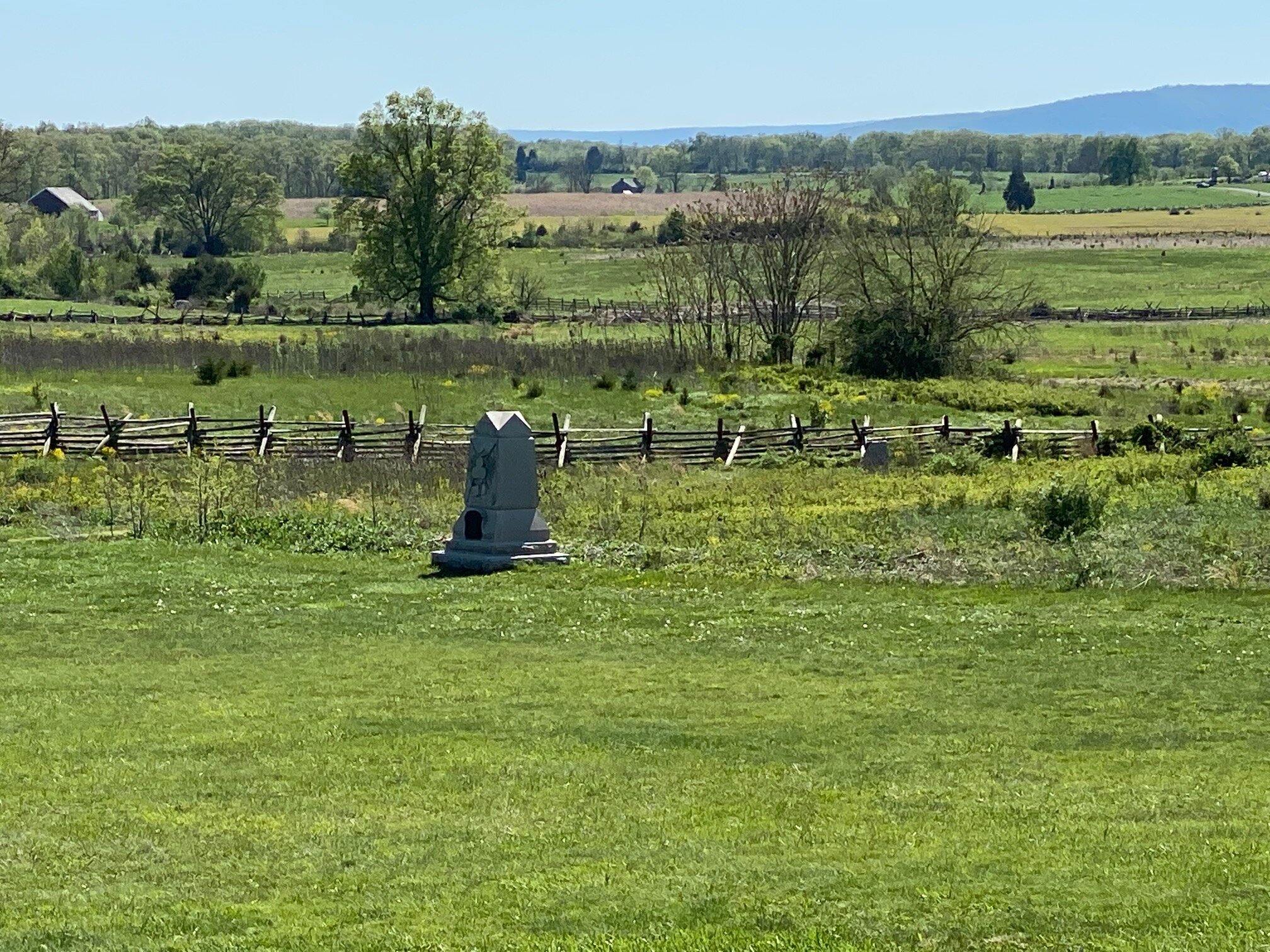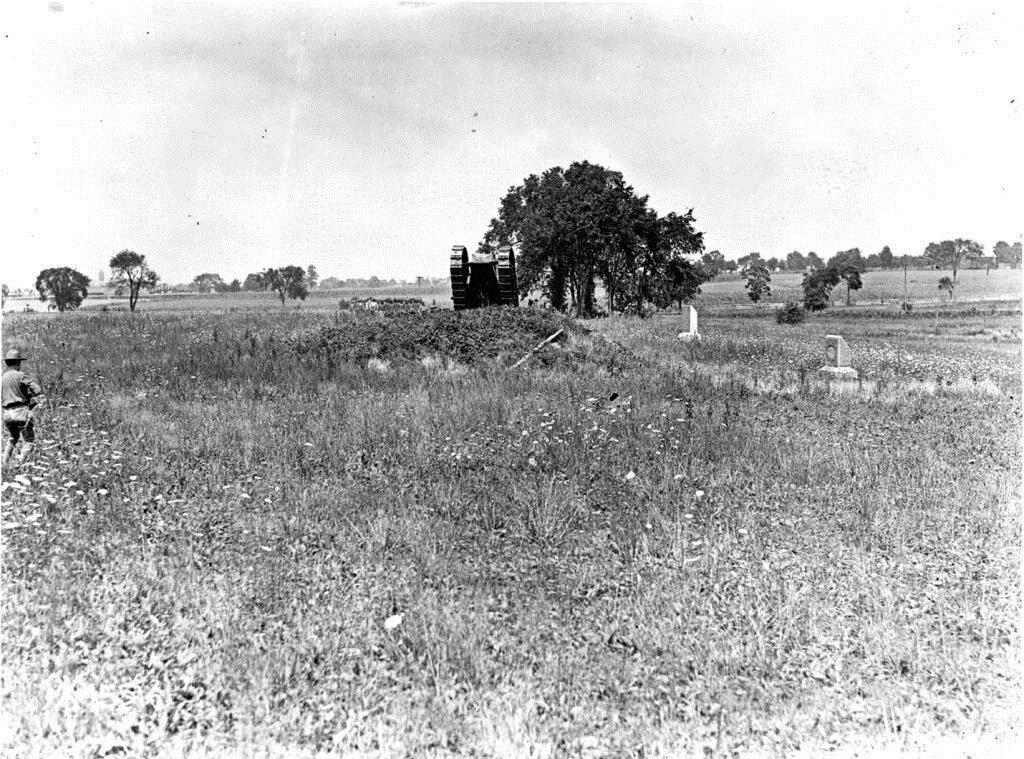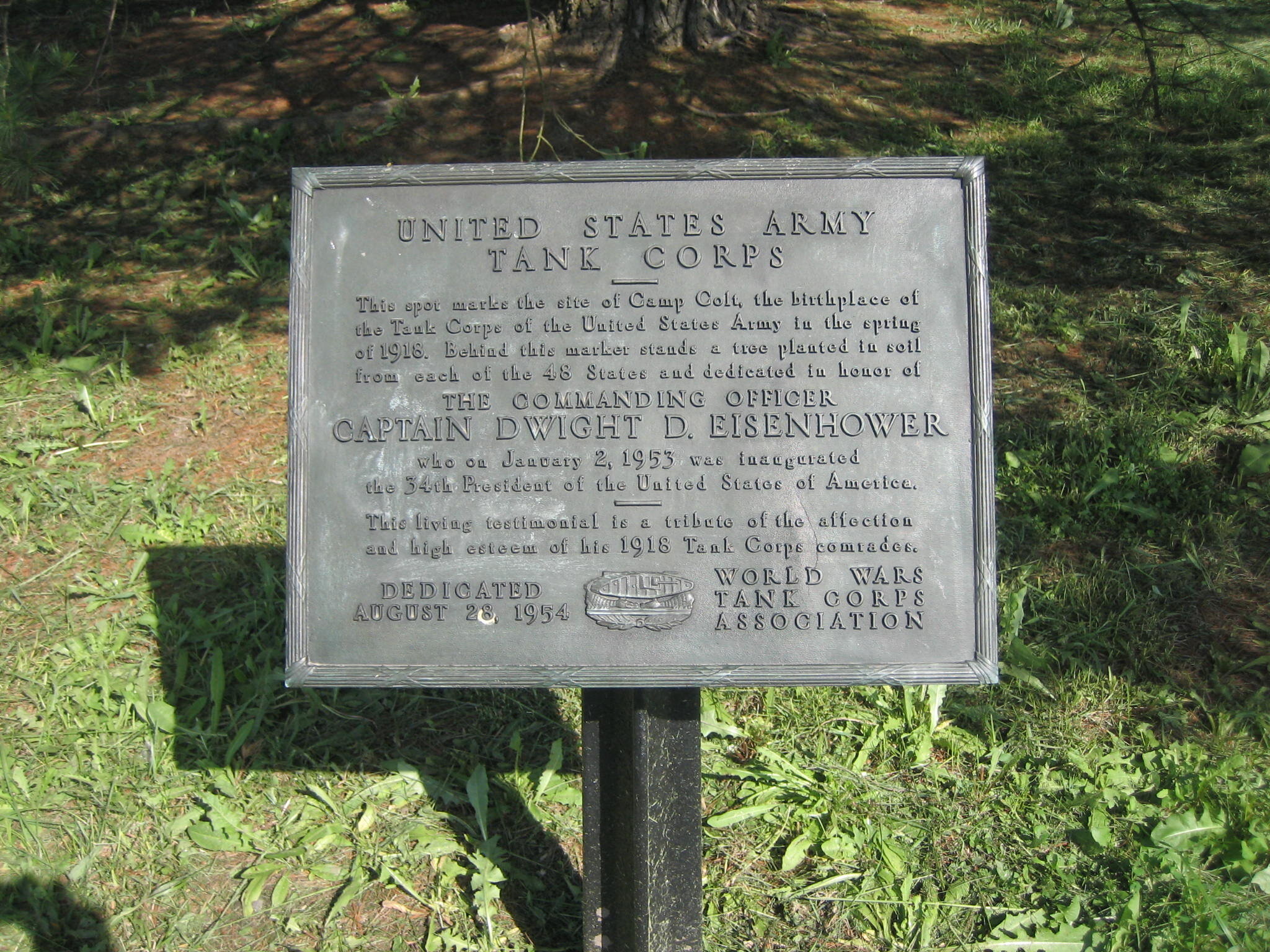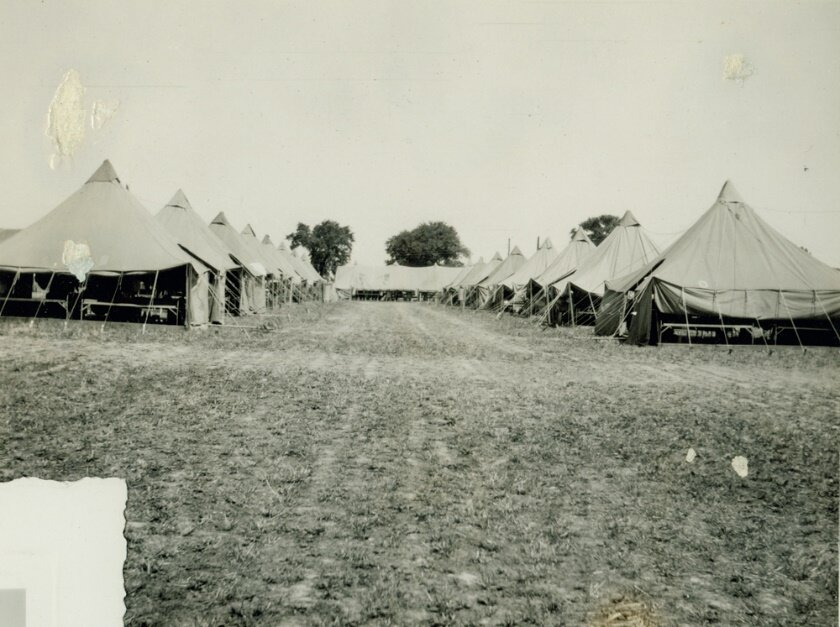On a windy but beautiful Saturday May 1st, more than two dozen members and friends of the Civil War Round Table of Eastern PA gathered in Gettysburg for two tours led by Round Table presenters.
In the afternoon we were led by Mark Snell through fields on which was fought, “Gettysburg’s Other Battle” - the name of Snell’s book about the placement of World War I military training camps upon this sacred ground during 1917 and 1918. Then in World War II, the same land was used as a POW camp for German prisoners.
Of course, Gettysburg is known as the second bloodiest battle of the 19th century and as the site of Lincoln’s Gettysburg Address as the cemetery containing Union dead was dedicated. Eventually the battlefield was enshrined as a national park and in 1913, a “Peace Jubilee” was observed on this ground. and veterans returned to the scene of battle.
But four year after that observance, after being petitioned by the citizens of Gettysburg, an infantry training ground was established bringing thousands of soldiers into town and onto battle lands. Buildings, latrines, kitchens, even a stockade were erected to house the young men. A year later, the Tank Corps took over in 1918, and the area was dubbed “Camp Colt.” To practice driving tanks they used the Bliss farm barn bridge ramp and the ruined house basement. Bliss farm was the only farm which was intentionally destroyed by the Union forces during Gettysburg.
Snell walked us through the sites, some of which are paved over, some of which are still raw fields. Along the way he talked and explained what was happening when and the connection of Dwight D. Eisenhower of the camp, long before he was a general or a president. He spoke of the ravages the camps inflicted on the ground and how much was eventually erased to return the land to it 1863 appearance.
The final stop was at the Copse of Trees on Hancock Ave where we had over the fields, a view of where a huge swimming pool for the troops once stood, much of it still intact underground.
